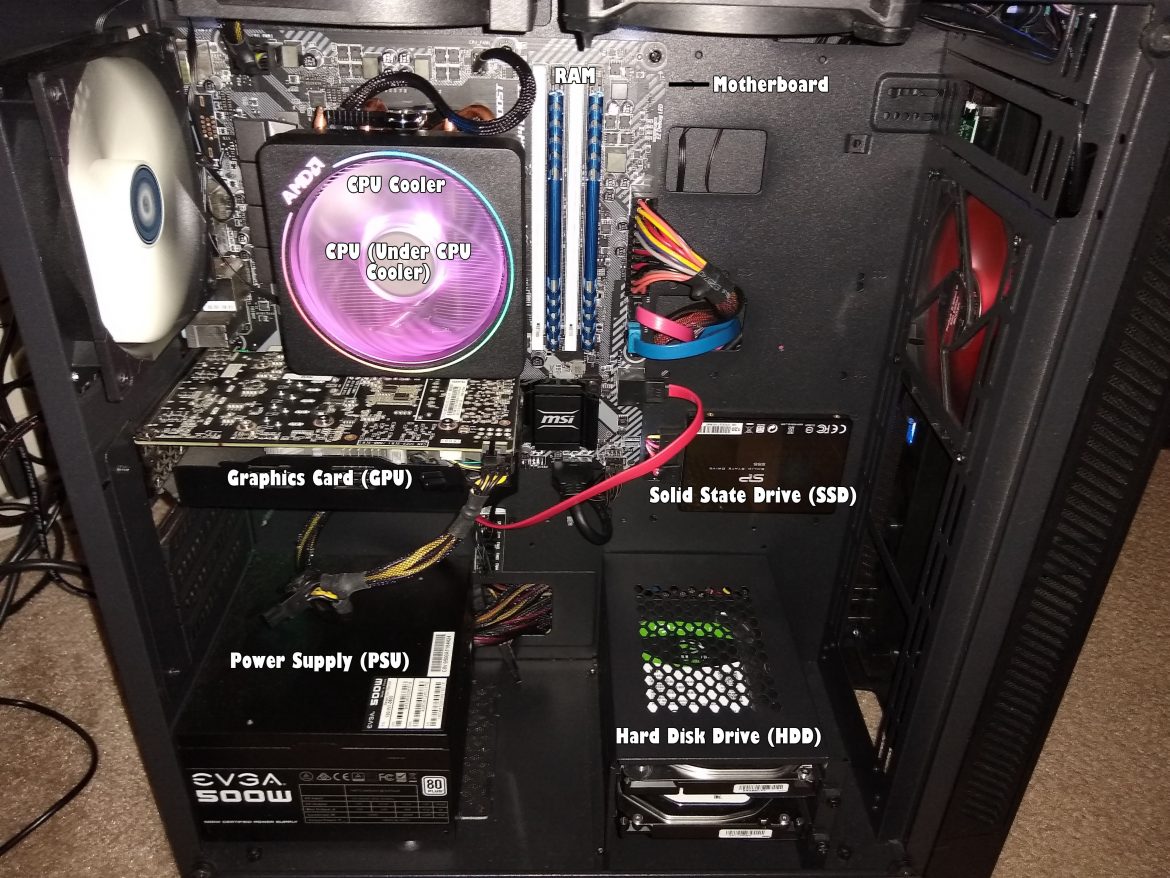The work horse of any good PC.
Random Access Memory, or RAM for short, is often overlooked yet incredibly vital to your computer’s operation. Without it, it is literally impossible for your computer to boot or do much of anything. One of the more expensive components of a computer, a respectable amount of RAM (8GB is recommended for any usage nowadays) will run $70+ easily.
If you want fancy RGB or “gaming” RAM, you can expect to tack on $20 or more.
There is a lot of misleading information surrounding RAM and it often gets confused with HDD/SSD storage. To be clear, RAM affects how many programs you can have running at once, and has nothing to do with storage capacity. All information is cleared from RAM once the computer is shut off.
Too little RAM will result in programs crashing or freezing. Having too much isn’t possible, but realistically anything over 32GB is unnecessary. Exceptions are made if you’re doing high-level video editing or 3D rendering, which are extremely memory intensive.

Important terminology to know is DDR3 vs DDR4. These terms concern the physical shape of the RAM, along with the speed and other technical things. Unless you are building a PC using older parts, DDR4 RAM is what you will want.
But which RAM is best?
The simple answer is whatever you can afford. Faster RAM does make your computer run faster, but the difference between 2666MHz and 3200MHz RAM is negligible in day-to-day use.
The speed of RAM, denoted in MHz, is a measure of how quickly your system can access the data stored in the memory chips. Getting faster RAM may get you a few extra frames per second in games, and maybe shave a second off your boot times, but it’s up to do to decide whether you want to spend that extra money. One thing to note is that if you are building a PC with an AMD processor, faster RAM plays a bigger part in your overall speed than with an Intel processor, but any DDR4 memory will provide sufficient speeds.
